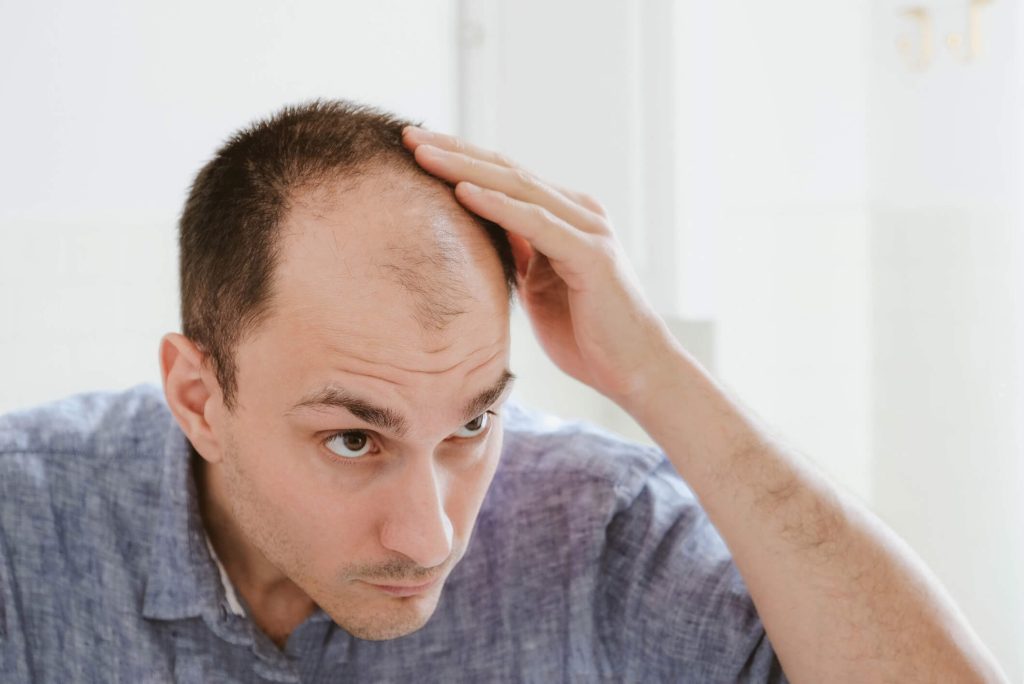Hair transplant surgery is an increasingly popular treatment for hair loss, offering patients a chance to regain their confidence and youthful appearance. However, many patients have questions about the recovery process, specifically regarding whether they can wear a hat after their hair transplant operation. This blog aims to provide comprehensive advice on this topic, addressing concerns and offering detailed guidelines for those who have undergone or are considering hair transplantation.
Understanding the Hair Transplant Procedure
Hair transplant surgery is a specialized treatment for hair loss in which hair follicles are transplanted from one part of the body (usually the back or sides of the scalp) to balding or thinning areas. This technique has changed significantly throughout time, resulting in more natural and effective outcomes. Understanding the difficulties of hair transplant surgery is crucial for anyone considering the procedure.
Types of Hair Transplant Procedures
There are two primary methods for hair transplantation. Both techniques aim to achieve a natural-looking hairline, but they differ in their approach and recovery process.
-
Follicular Unit Transplantation (FUT):
- Procedure: FUT involves cutting a strip of scalp from the donor location, which is usually the rear of the head. The donor location is then sutured, resulting in a linear scar. The strip is separated into individual hair grafts using a microscope.
- Implantation: The grafts are carefully implanted into tiny incisions made in the recipient area.
- Recovery: The recovery process involves healing of both the donor and recipient areas. Patients may experience some discomfort and scabbing in the donor area, but the hair transplant team provides guidelines to minimize risks and ensure proper healing.
-
Follicular Unit Extraction (FUE):
- Procedure: FUE involves extracting individual hair follicles directly from the donor area using a specialized tool. This method does not require a linear incision, resulting in minimal scarring.
- Implantation: Each follicle is meticulously implanted into the recipient area, following the natural hair growth pattern.
- Recovery: FUE has a shorter recovery period compared to FUT. Patients experience less discomfort and faster healing, with tiny dot-like scars that are less noticeable.
Both methods require careful aftercare to ensure the success of the hair transplant and the patient’s satisfaction with the results.
The Procedure Day
On the day of the hair transplant operation, several steps are followed to ensure a successful procedure:
- Preparation: The patient’s scalp is cleaned, and the donor and recipient areas are marked. Local anesthesia is administered to numb the scalp, ensuring a pain-free experience.
- Harvesting: In FUT, a strip of scalp is removed, while in FUE, individual follicles are extracted. The harvesting technique is chosen based on the patient’s needs and the surgeon’s recommendations.
- Graft Preparation: The harvested hair grafts are carefully prepared for implantation. This involves trimming and sorting the grafts to ensure they are healthy and suitable for transplantation.
- Implantation: Tiny incisions are made in the recipient area, and the prepared grafts are carefully inserted. Each graft must be placed carefully to get a natural appearance, taking into account the angle, direction, and density of the hair.
- Aftercare Instructions: Post-surgery, the patient receives detailed aftercare instructions, including how to care for the scalp, medications to manage pain and prevent infection, and guidelines on activities to avoid during the initial healing phase.
Immediate Post-Operative Care
The immediate recovery process after hair transplant surgery is critical. Here are the key things to keep in mind:
- First 24-48 Hours: The recipient area will be covered with a bandage to protect the incisions. Patients may experience swelling, discomfort, and bleeding. It’s important to follow your doctor’s advice and take prescribed medications to manage these symptoms and prevent hair transplant infection.
- First Week: During this stage, the hair grafts are very delicate. Avoid touching, tugging, or scratching the scalp to minimize the risk of dislodging the grafts. Sleep with your head elevated to reduce swelling.
Recovery and Aftercare
The recovery process varies between FUT and FUE but generally involves:
- Initial Healing: In the first few days, patients may experience swelling, redness, and scabbing. Following the clinic’s aftercare recommendations is essential to minimize complications and promote healing.
- Hair Shedding: It is normal for transplanted hair to shed within the first several weeks. This is a typical part of the process, as the new hairs rest before regeneration.
- Hair Growth: New hair growth usually starts after 3-4 months, with complete benefits appearing around 9-12 months. Patients should follow up with their doctor to track their development and resolve any issues.
By understanding the hair transplant procedure, from the initial consultation to long-term care, patients can make informed decisions and achieve the best possible outcomes.
When Can You Wear a Hat?
Wearing a hat after a hair transplant is a common concern among patients, especially for those who want to cover their scalp during recovery. Here’s a detailed recovery timeline and factors to consider:
- First Few Days: Avoid wearing any headwear, including caps or beanies, immediately after the surgery. The incisions and hair grafts are highly sensitive, and any pressure or friction can interfere with the healing process.
- After the First Week: At this stage, you can wear a loose-fitting cap or hat, but ensure it does not cause excessive friction or pressure on the scalp. This is crucial to avoid damaging the newly transplanted hairs.
- After Two Weeks: By this time, the grafts are more secure. You can start wearing hats more comfortably, but opt for those made from breathable materials to prevent dirt and sweat buildup.
Choosing the Right Hat
Selecting appropriate headwear is essential during the recovery stages. Consider these factors when choosing a hat:
- Loose-Fitting Hats: Choose hats that are not too tight to avoid tugging on the hair grafts. A loose-fitting baseball cap or beanie is a good option.
- Breathable Materials: Opt for hats made from lightweight, breathable fabrics like cotton. This helps to keep the scalp cool and prevents moisture buildup.
- Avoid Heavy Hats: Heavy headwear can exert unnecessary pressure on the scalp, hindering the healing process.
The Importance of Consultation and Planning
Before undergoing a hair transplant, a thorough consultation with a qualified surgeon is crucial. During this consultation, the doctor will assess your hair loss pattern, scalp condition, and overall health to determine the most suitable method for your case. Factors such as hair density, donor hair availability, and desired hairline design are considered.
- Personalized Plan: A customized treatment plan is created, outlining the number of grafts needed and the expected outcome. This plan ensures that the results are tailored to your unique needs and expectations.
- Realistic Expectations: The consultation also helps set realistic expectations. Patients should understand that hair transplant surgery can significantly improve their hairline and density, but it may not completely restore the original hair volume.
Long-Term Considerations
Post-transplant care doesn’t end with the initial recovery. Long-term maintenance is important for sustaining the results:
- Hair Care Routine: Use gentle hair care products and avoid harsh treatments that can damage the new grafts.
- Gentle Hair Care: Use mild shampoos and avoid harsh treatments. Handle your hair gently to prevent damage to the new grafts.
- Sun Protection: Protect your scalp from direct sun exposure, which can damage the sensitive skin and newly transplanted hairs. Wearing a hat can help shield your scalp from harmful UV rays.
- Healthy Lifestyle: A healthy lifestyle, including a balanced diet and avoiding smoking, supports hair health and overall well-being.
- Regular Check-Ups: Periodic visits to the clinic ensure that the transplanted hair is growing as expected and any issues are addressed promptly.
By understanding the hair transplant procedure, from the initial consultation to long-term care, patients can make informed decisions and achieve the best possible outcomes.
Conclusion
Wearing a hat after a hair transplant is possible with proper precautions and timing. Following your surgeon’s hair transplant aftercare guidelines and choosing the right type of headwear can protect your newly transplanted grafts and ensure a successful recovery. Remember, patience is key—allow your scalp the necessary time to heal, and you’ll soon enjoy a fuller, more stylish head of hair. For any specific concerns or advice, consult with your clinic’s team of experts to make informed decisions about your aftercare and headwear options.
By understanding the intricacies of the hair transplant recovery process and taking the appropriate precautions, you can look forward to excellent results and a confident, stylish look. Keep in mind that each patient’s experience may vary, and your clinic’s recommendations should be your primary source of guidance throughout your hair transplant journey.
Regain Your Confidence with Neograft Hair Restoration Orange County!
Are you tired of dealing with hair loss and longing for a fuller, more natural-looking hairline? At Neograft Hair Restoration Orange County, located in beautiful Orange County, California, our team of expert surgeons and hair restoration specialists is dedicated to helping you restore your hair and your confidence. We offer cutting-edge hair transplants tailored to your unique needs, ensuring exceptional results and a seamless experience from consultation to recovery.
Take the first step towards transforming your look and boosting your self-esteem by scheduling a consultation with Neograft Hair Restoration Orange County today. Protecting your new hair from sunlight is essential during recovery, and our team will provide you with all the guidance you need. Don’t let hair loss hold you back any longer—let us help you achieve the healthy, full head of hair you deserve!
FAQs about Wearing a Hat After Hair Transplant Surgery
1. Can I wear a hat immediately after my hair transplant?
No, it’s advised to avoid wearing headwear for the first few days after surgery to protect sensitive areas and ensure proper healing.
2. When is it safe to wear a loose hat after the procedure?
After the first week, you can wear a loose-fitting hat. However, it should not apply too much pressure to prevent dislodging the grafted areas.
3. What type of hat is best to wear during recovery?
Opt for loose-fitting hats made from breathable materials, such as cotton. This helps keep the scalp cool and prevents moisture buildup.
4. Will wearing a hat cause damage to my newly transplanted hair?
Wearing a hat that’s too tight or heavy can damage the grafts, especially in the early recovery stages. Therefore, it is crucial to follow your surgeon’s guidelines on when and how to wear a hat.
5. How long does the recovery process take after a hair transplant?
The initial recovery may take a week or two, but total hair growth and results typically take 9-12 months.
6. Is it normal for transplanted hair to shed after the procedure?
Yes, it’s common for transplanted hair to shed within the first few weeks as part of the natural hair growth cycle. New growth usually starts after a few months.
7. Should I be concerned if my scalp is red or swollen after the transplant?
Mild redness and swelling are expected in the first few days. If symptoms persist or worsen, contact your surgeon for advice.
8. Can I use hair products after the transplant?
Avoid hair products for at least the first week. After that, use gentle, mild products as your hair transplant team recommends.
9. How can I protect my scalp from the sun after my hair transplant?
Protecting your scalp from direct sun exposure is essential to prevent skin irritation and damage to the newly transplanted hair. Wearing a loose hat can protect during recovery.
10. What should I do if I have specific concerns about wearing hats after my hair transplant?
Consult your hair transplant surgeon for personalized advice and guidelines tailored to your recovery process. They can provide the best recommendations based on your unique situation.




Recent Comments